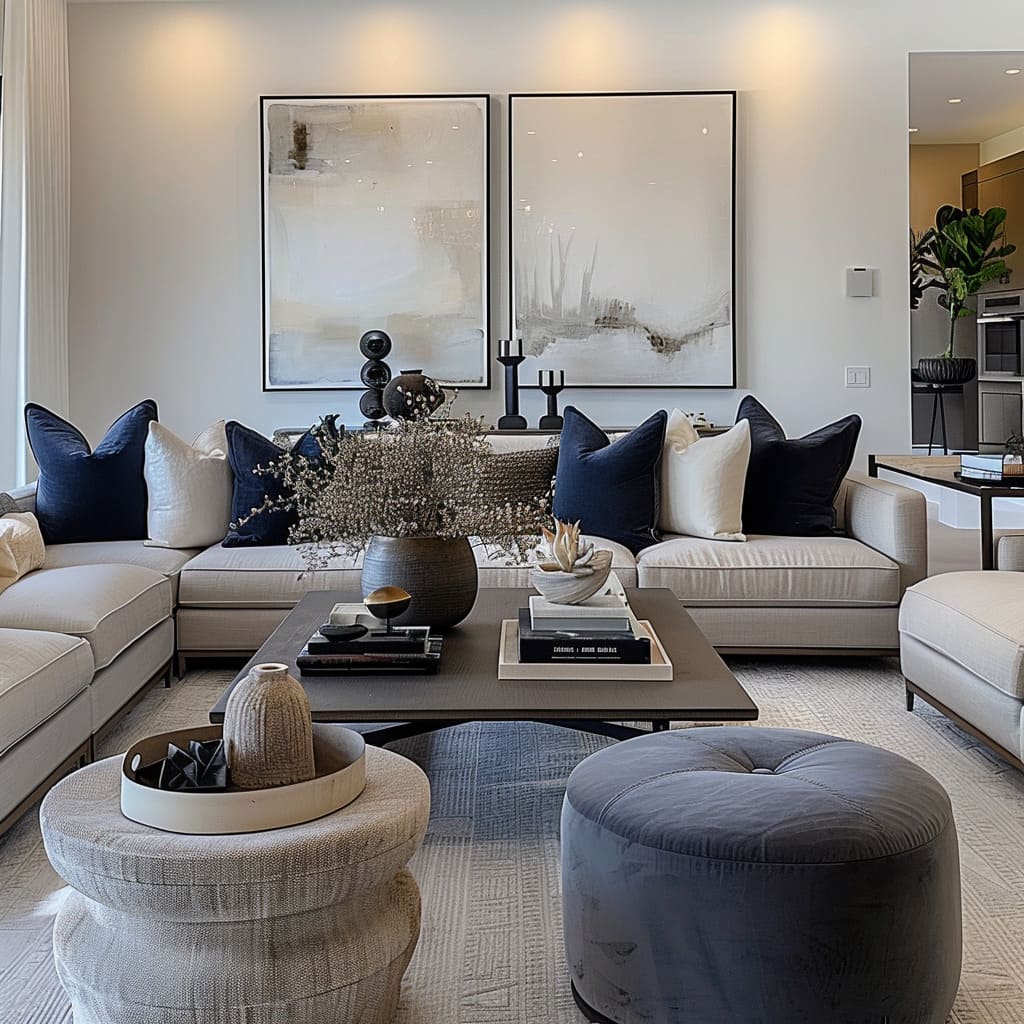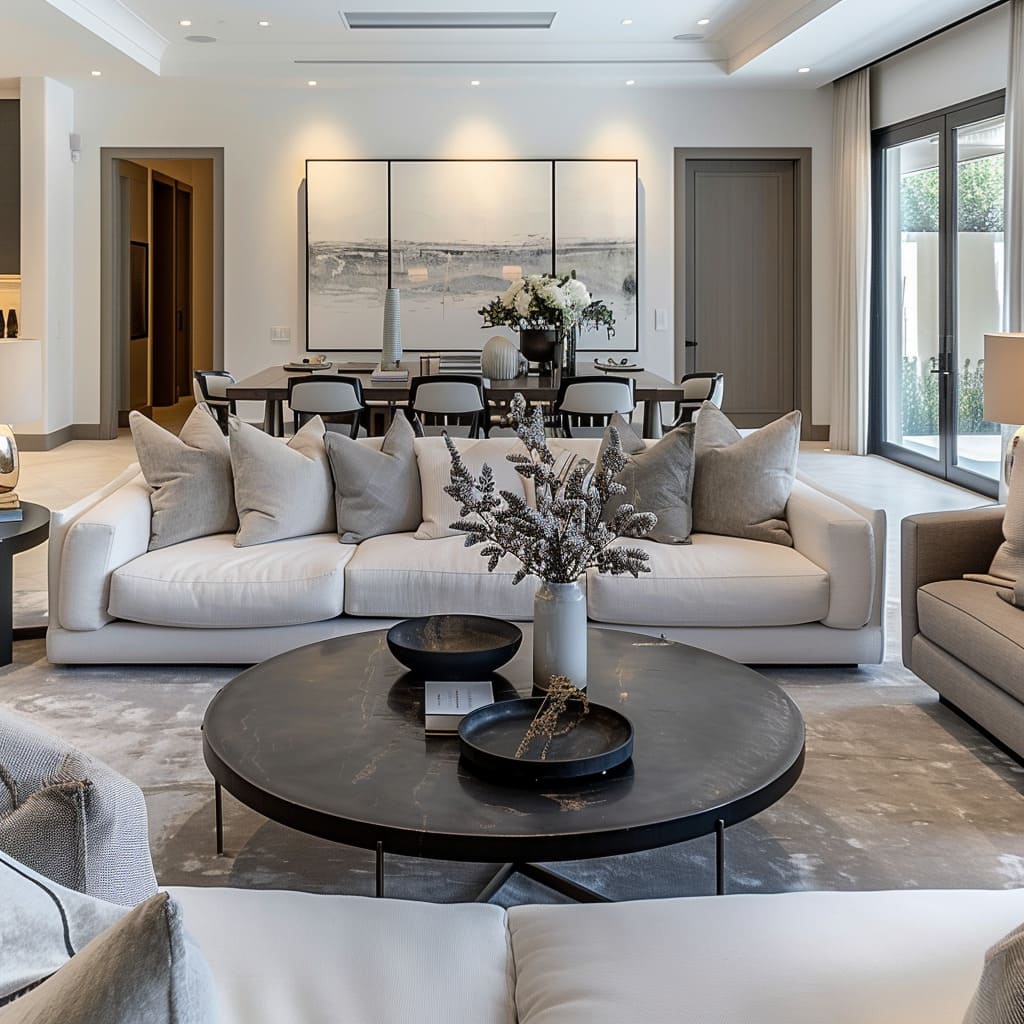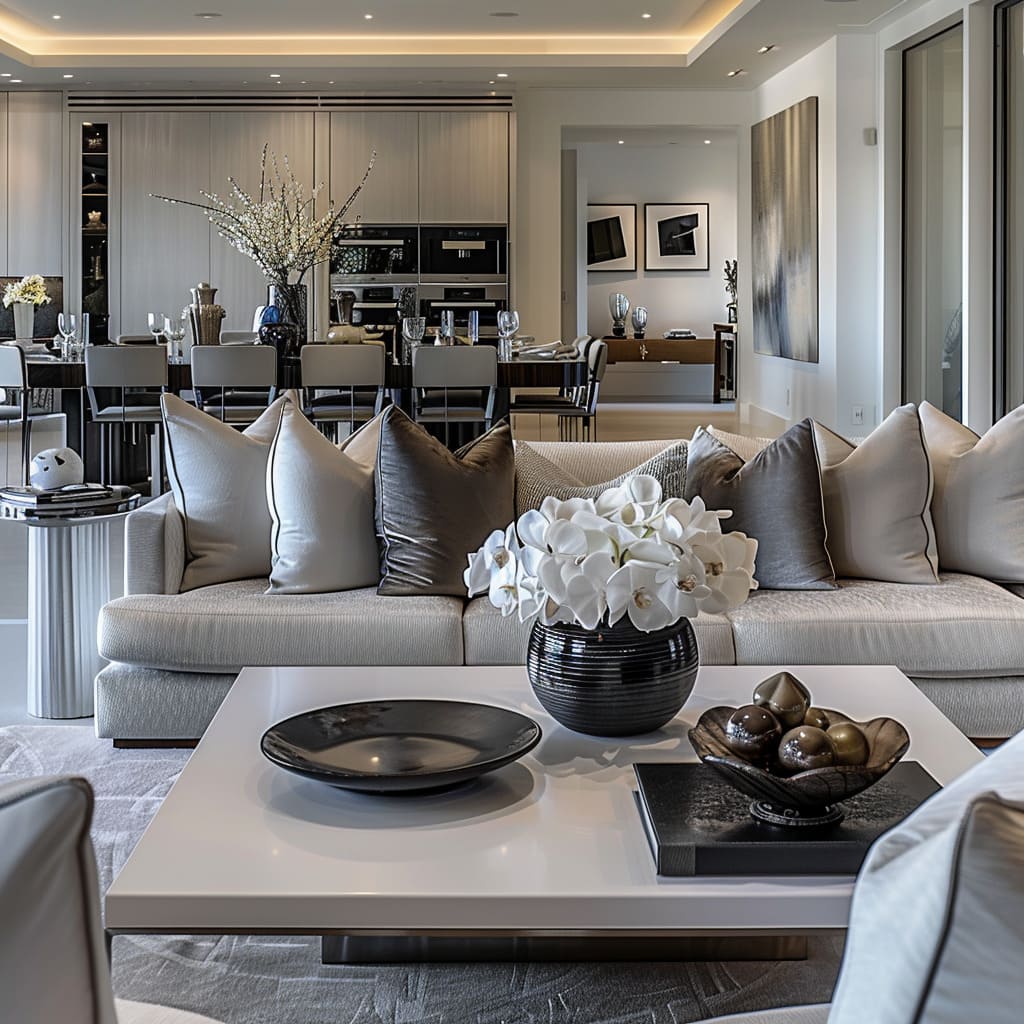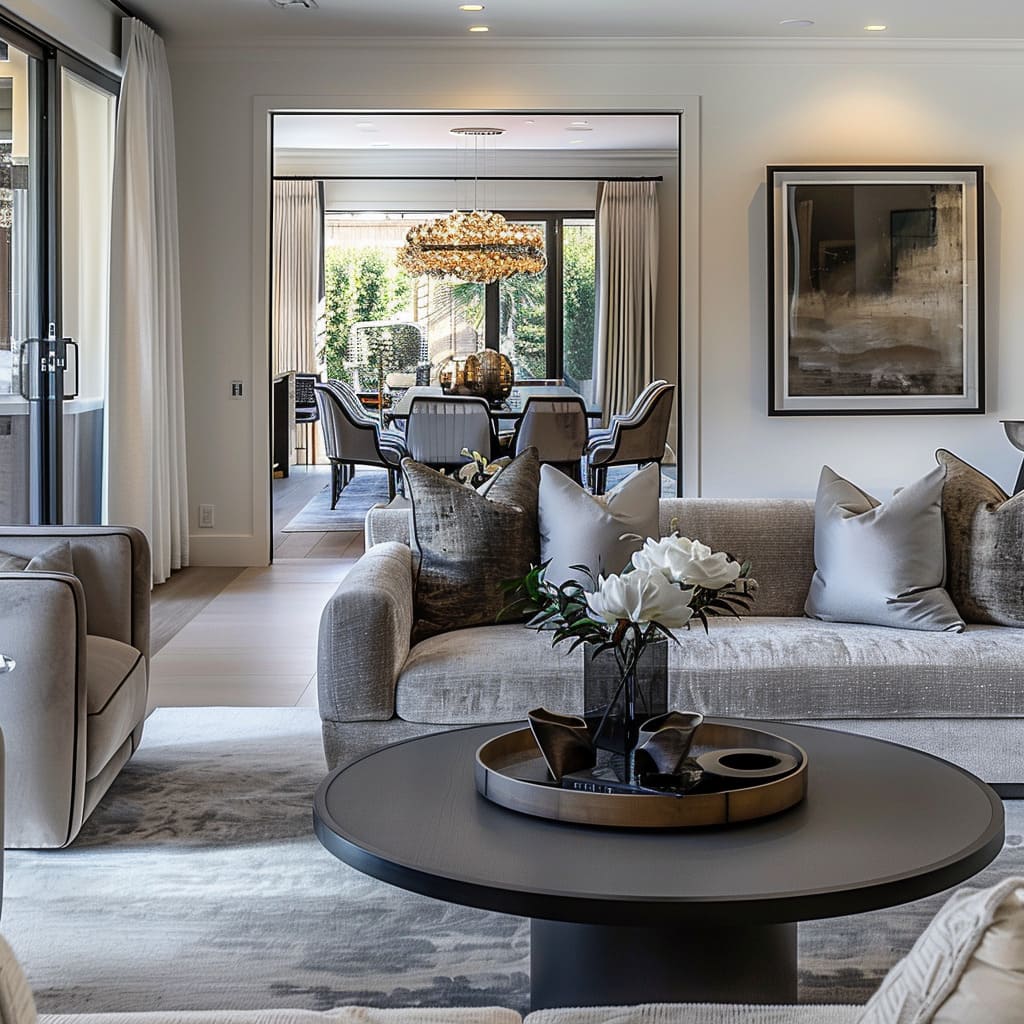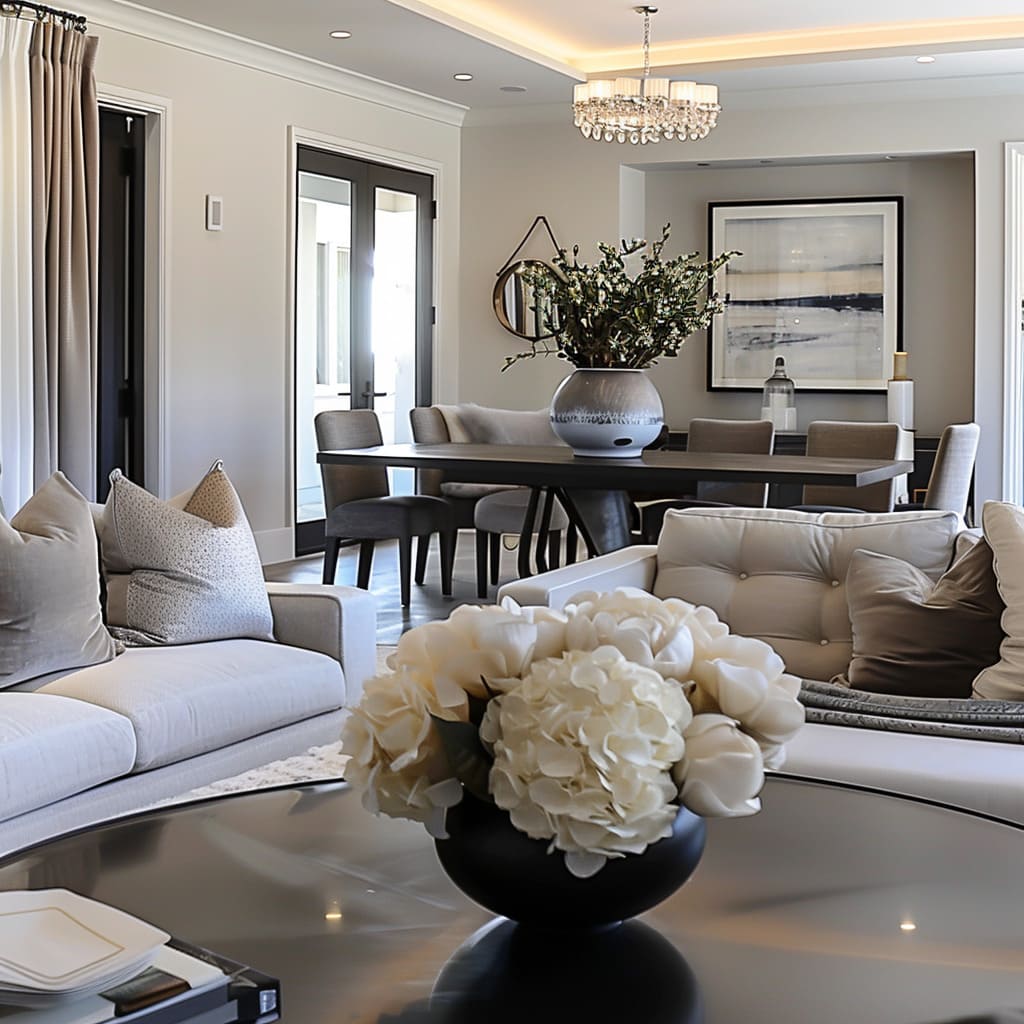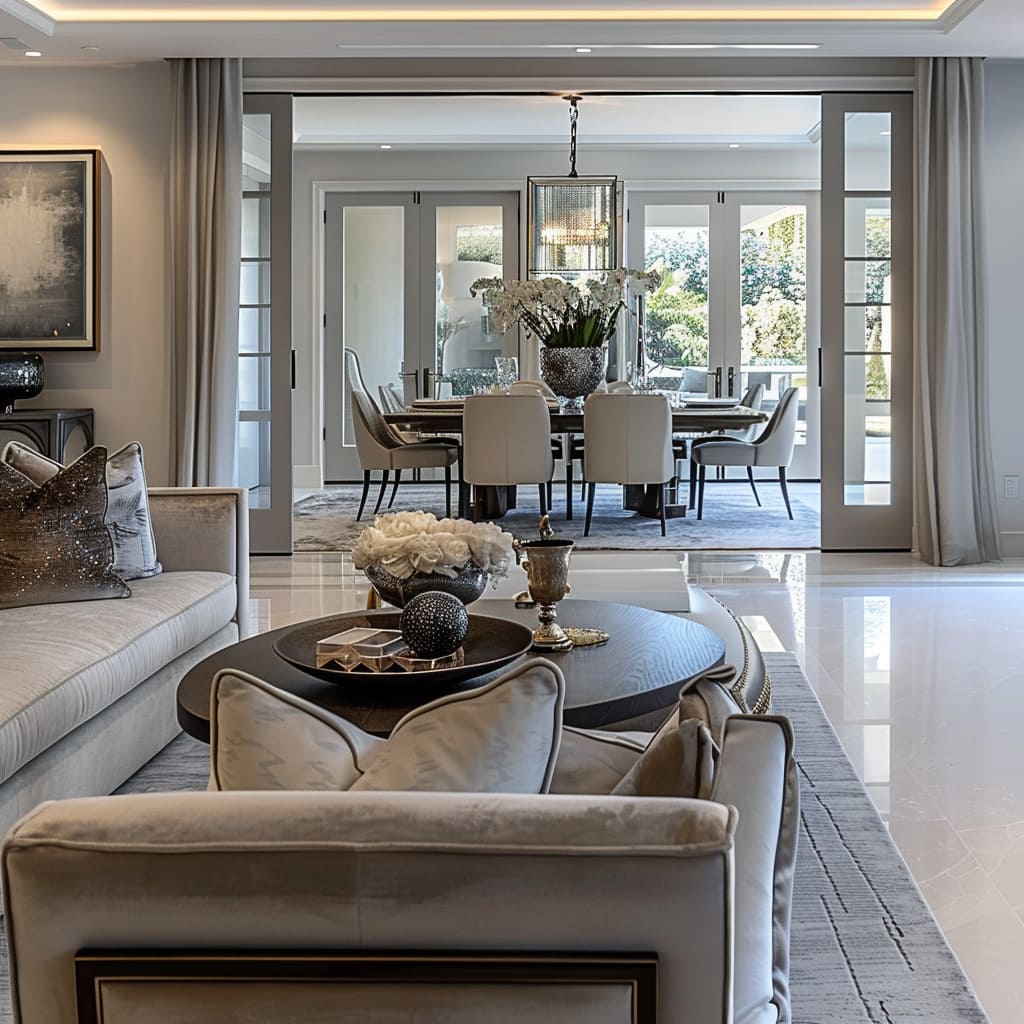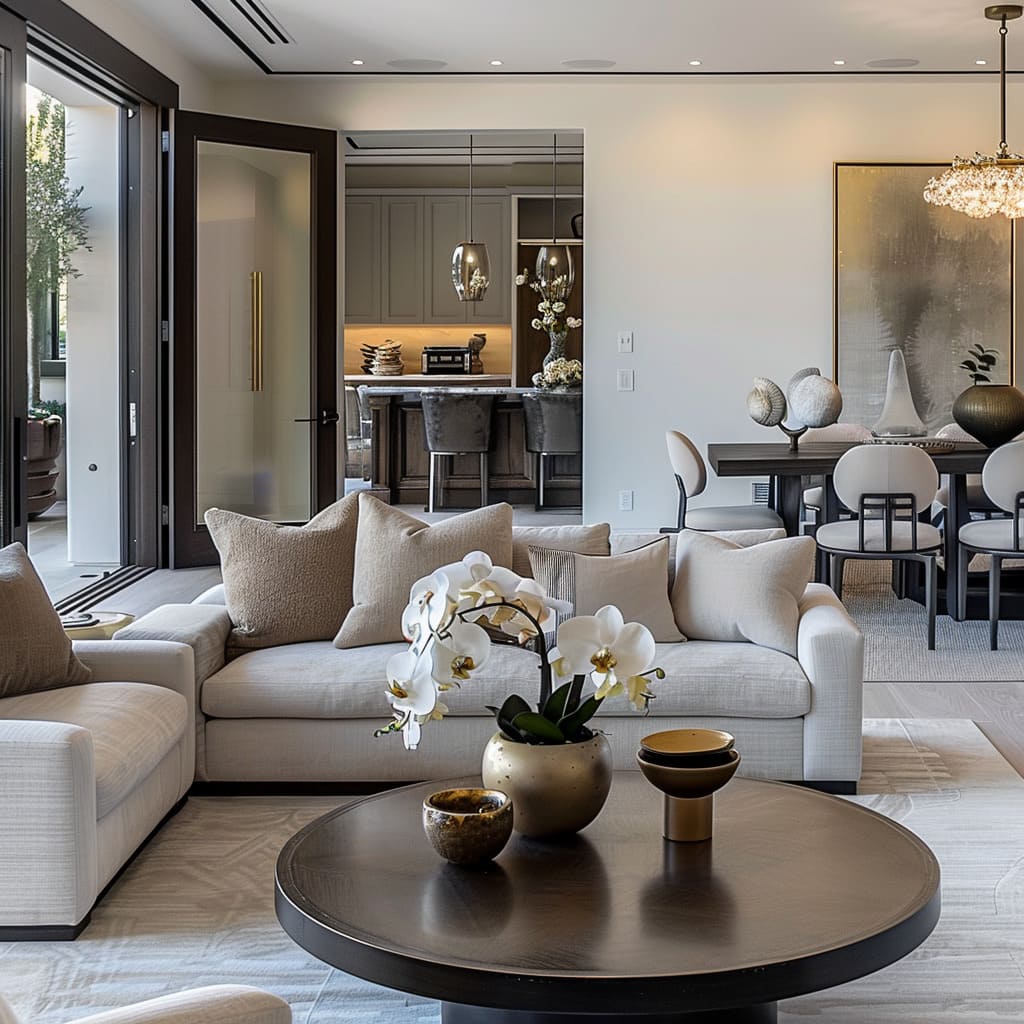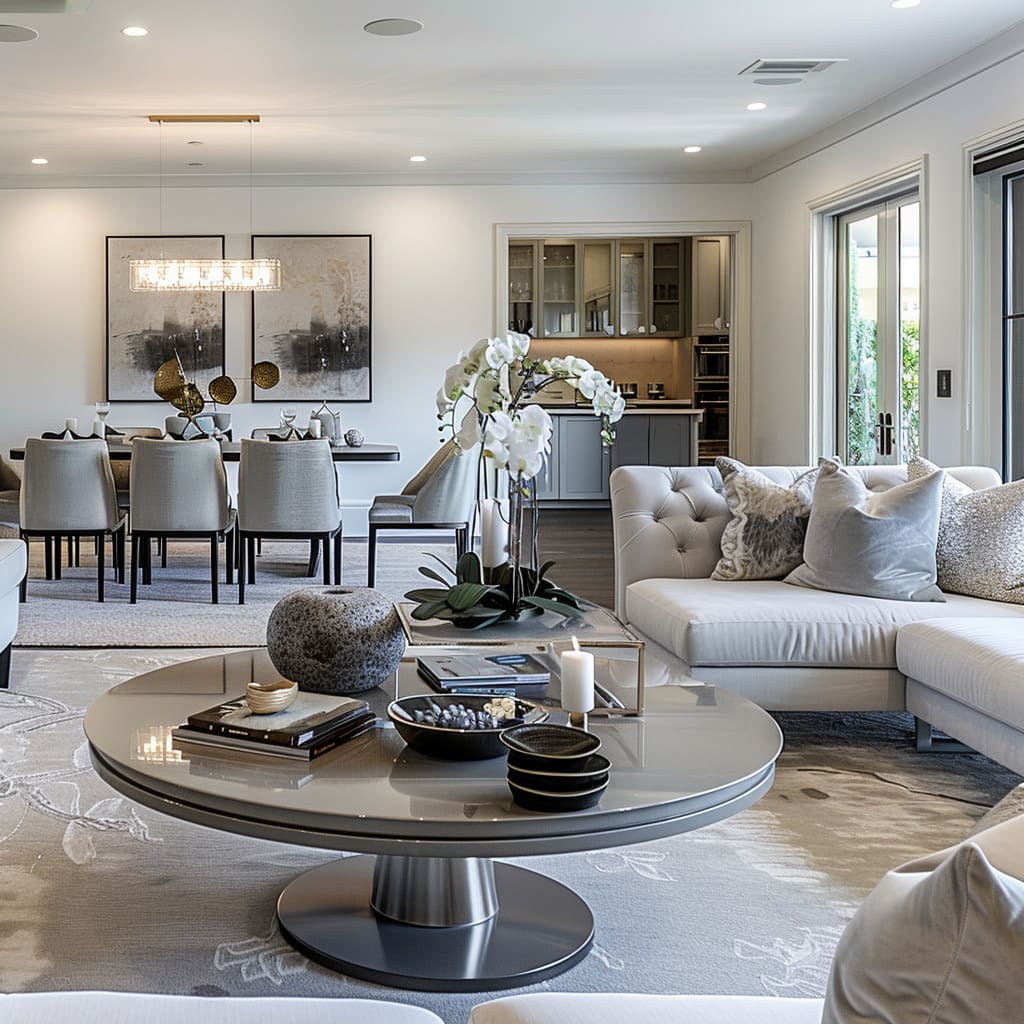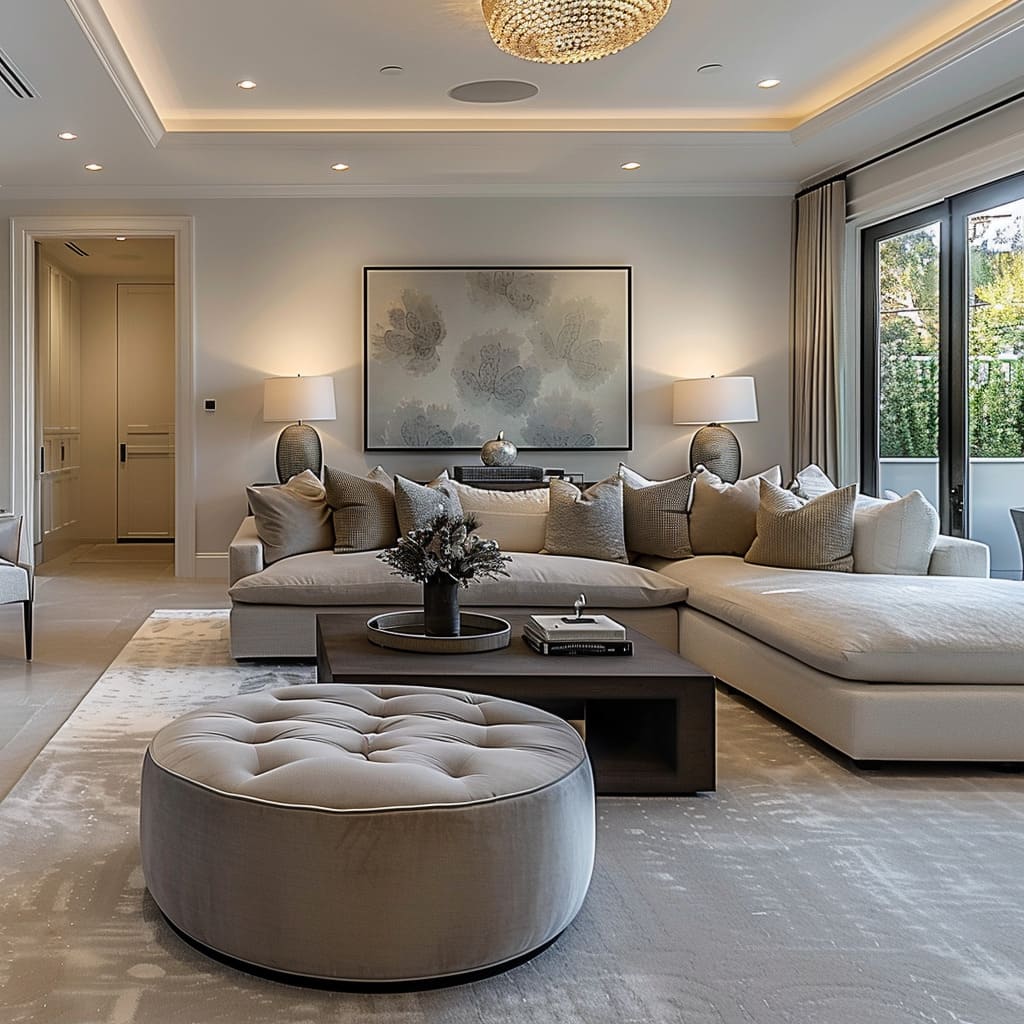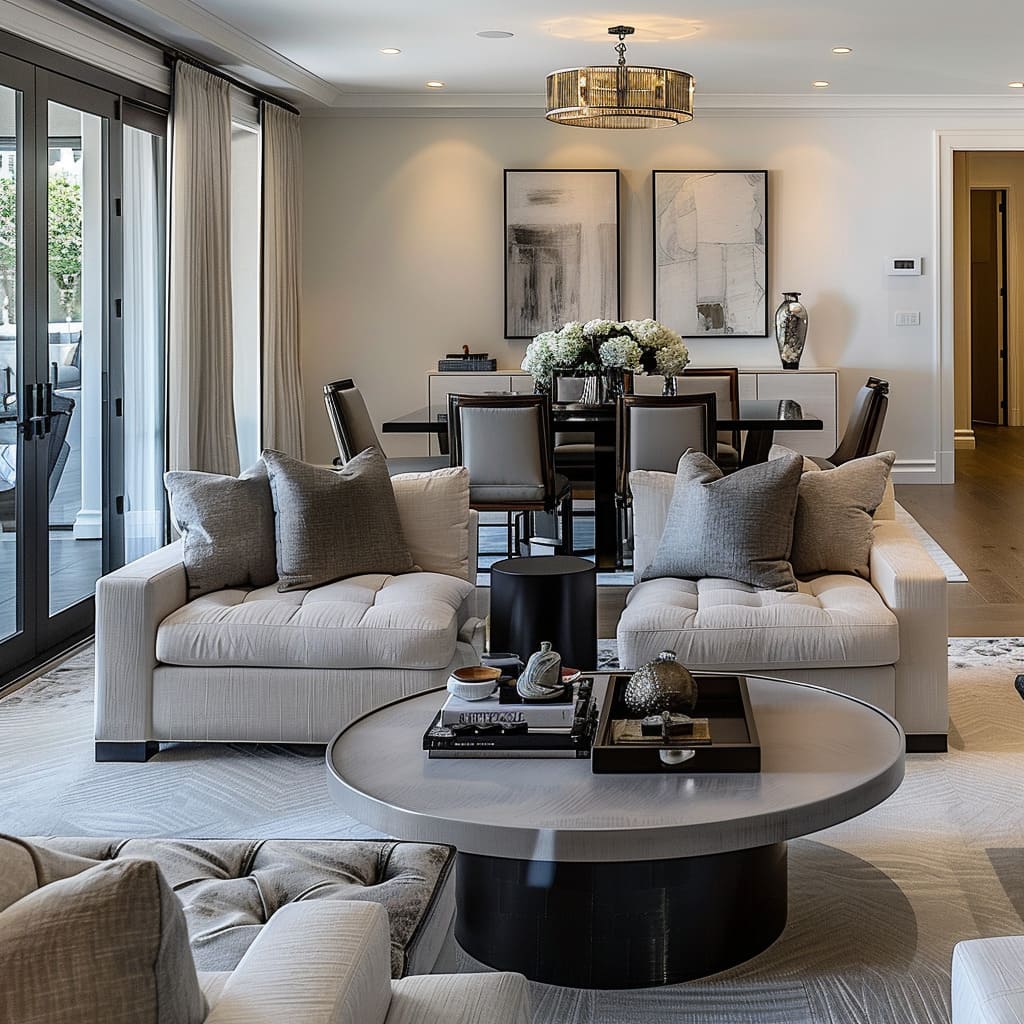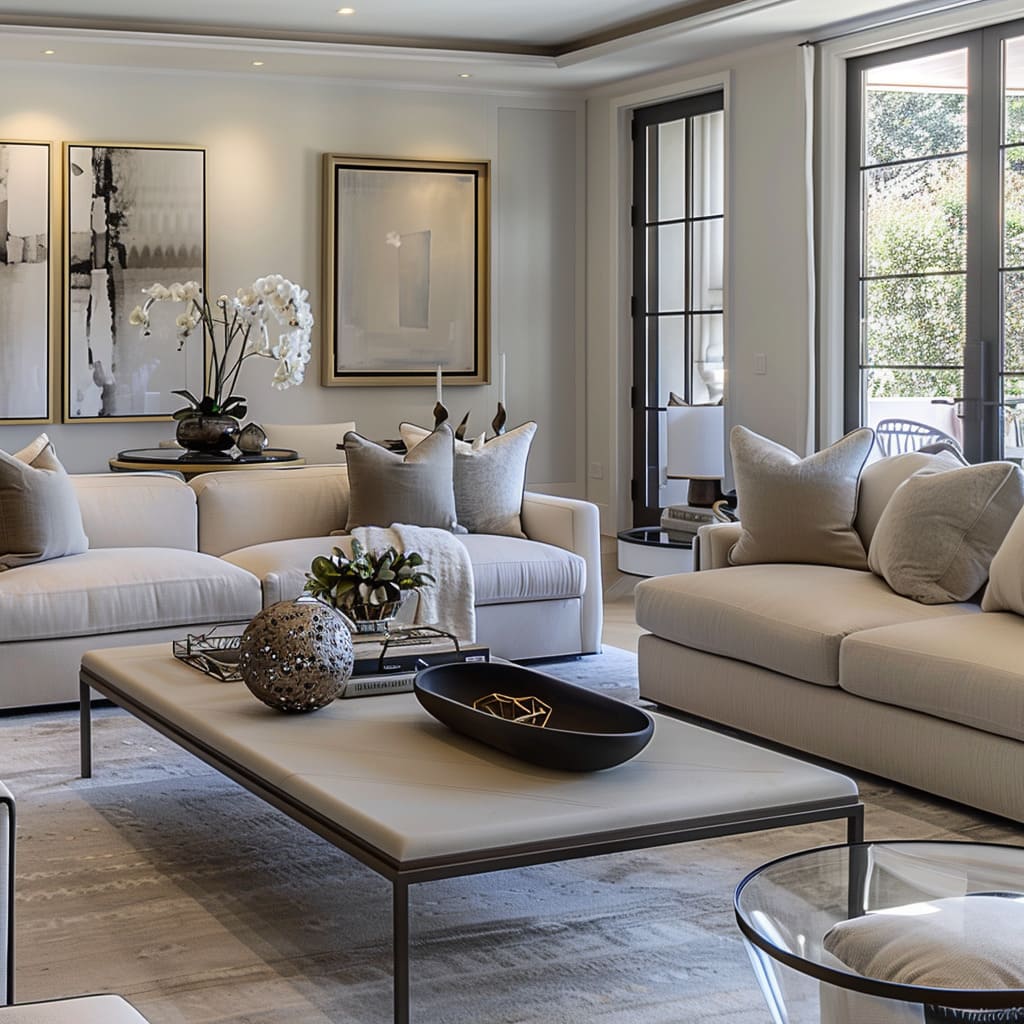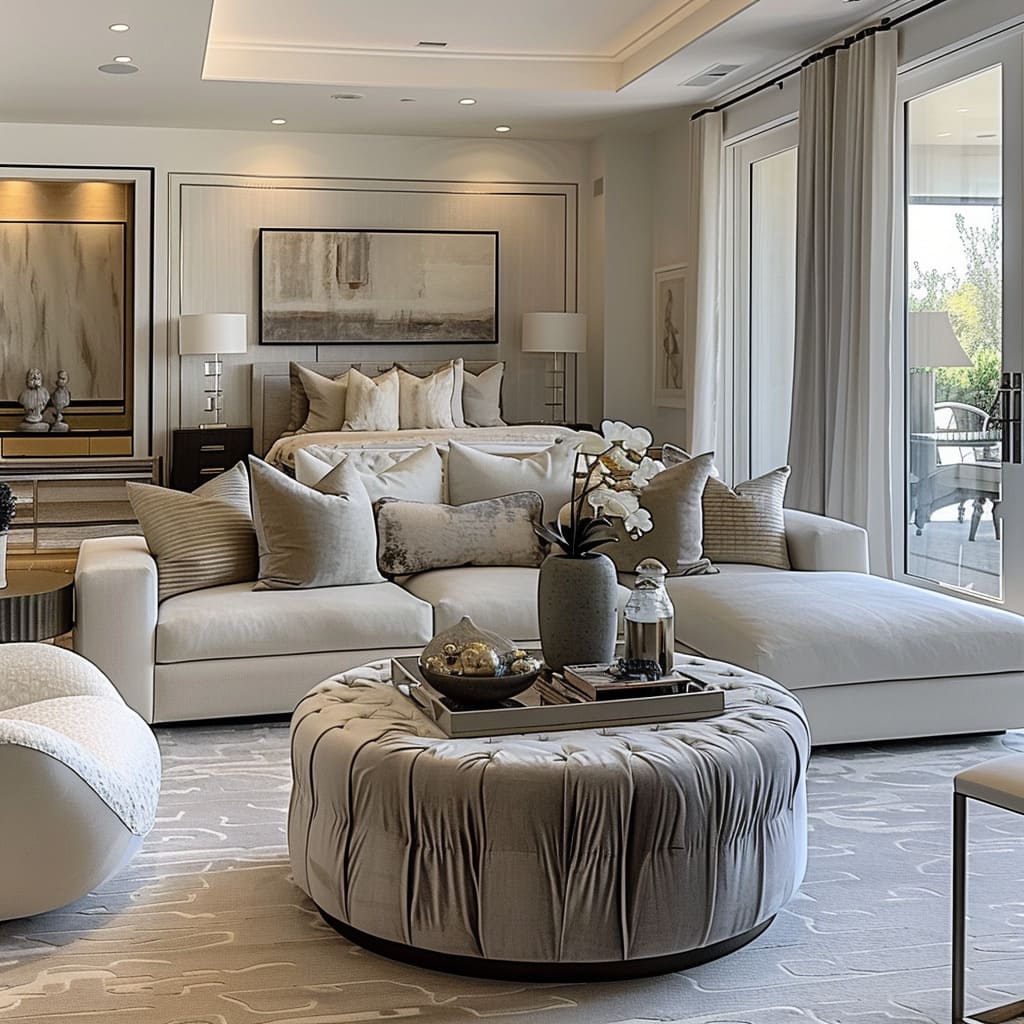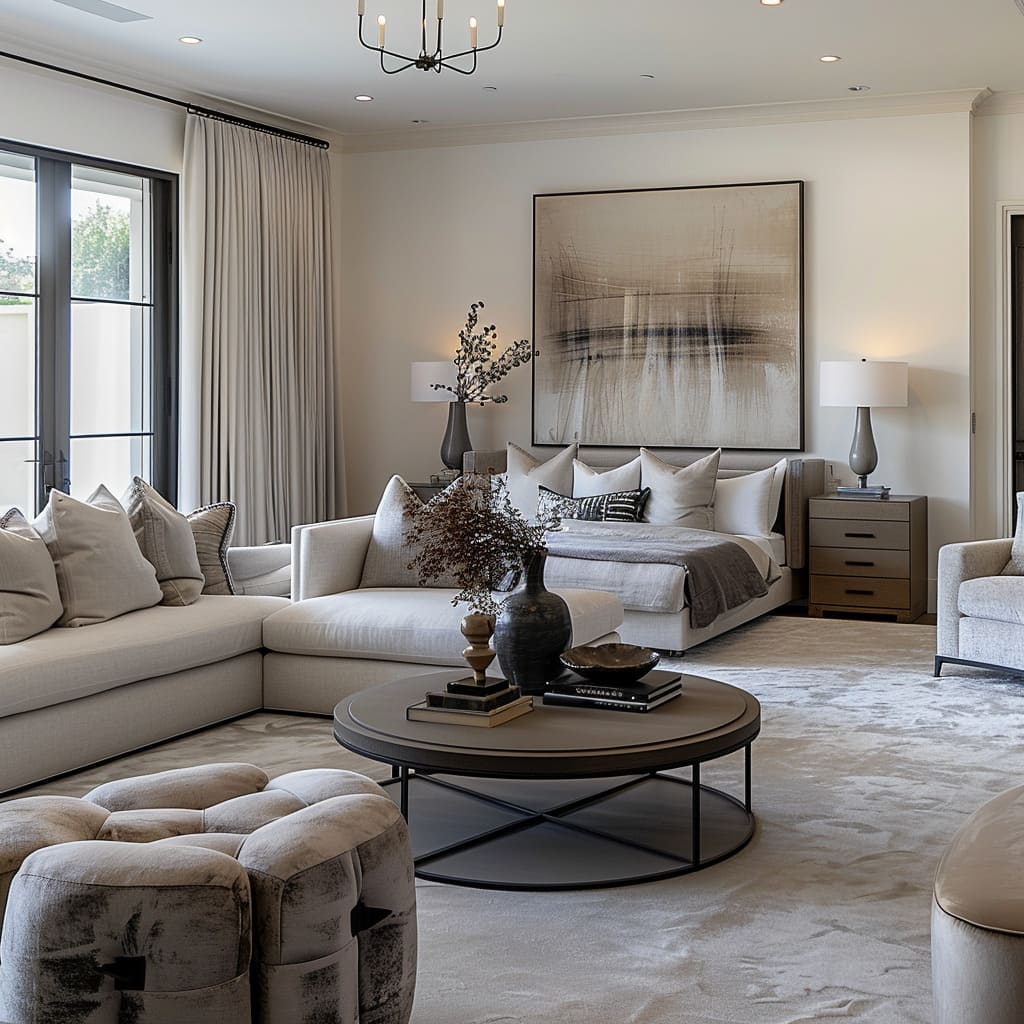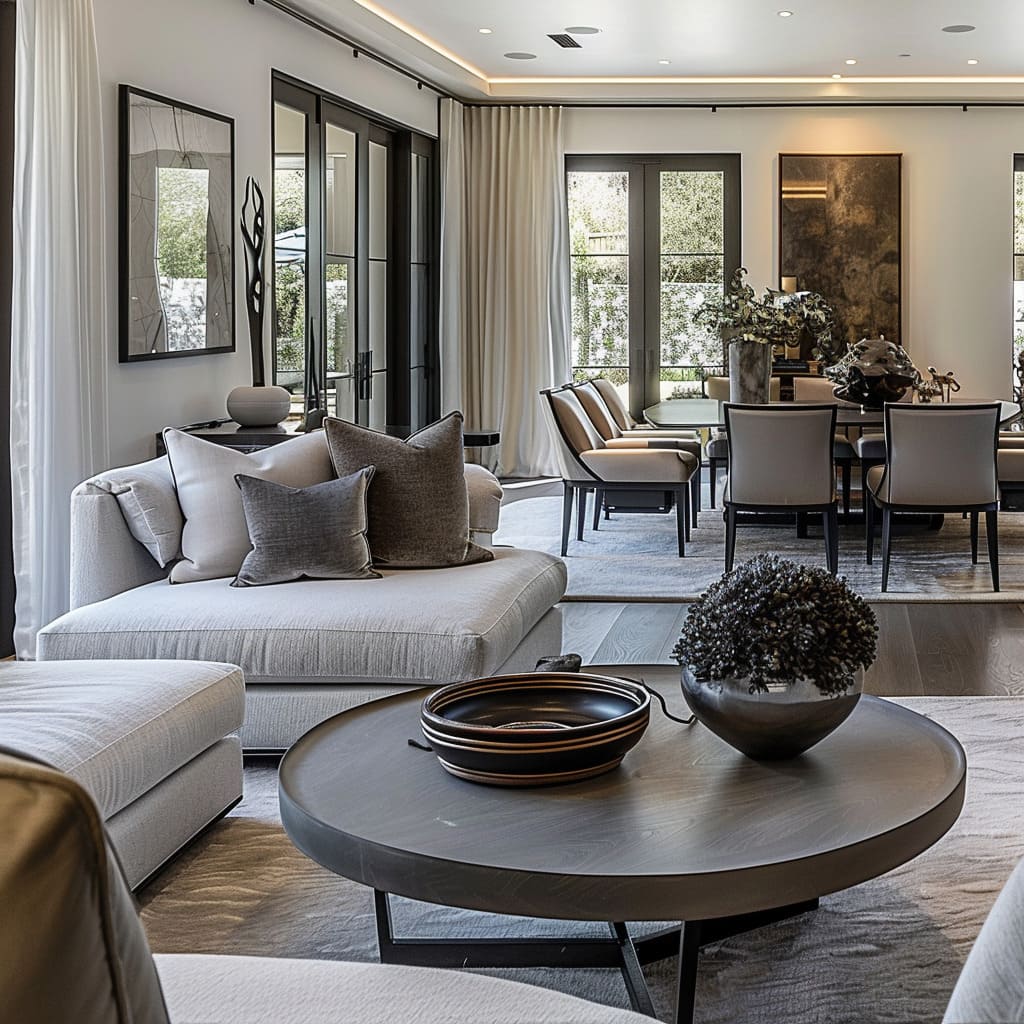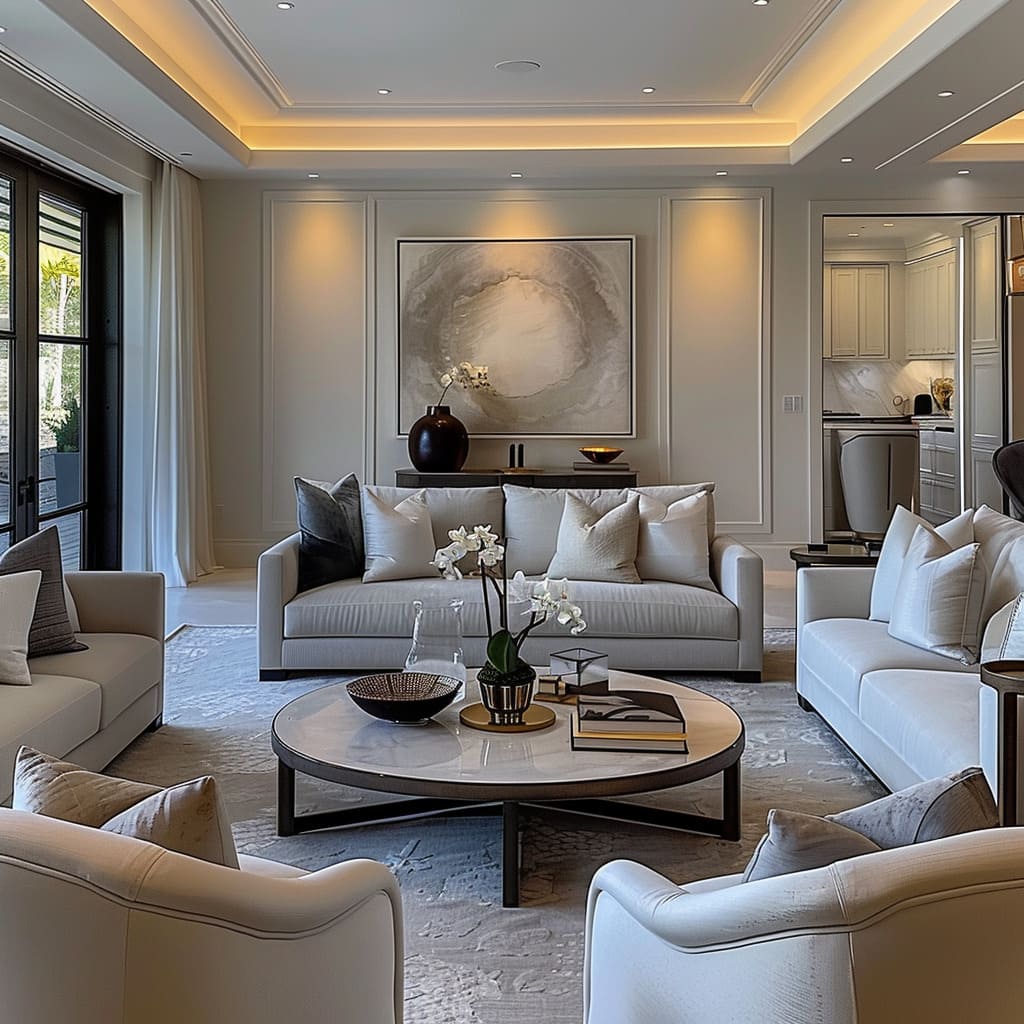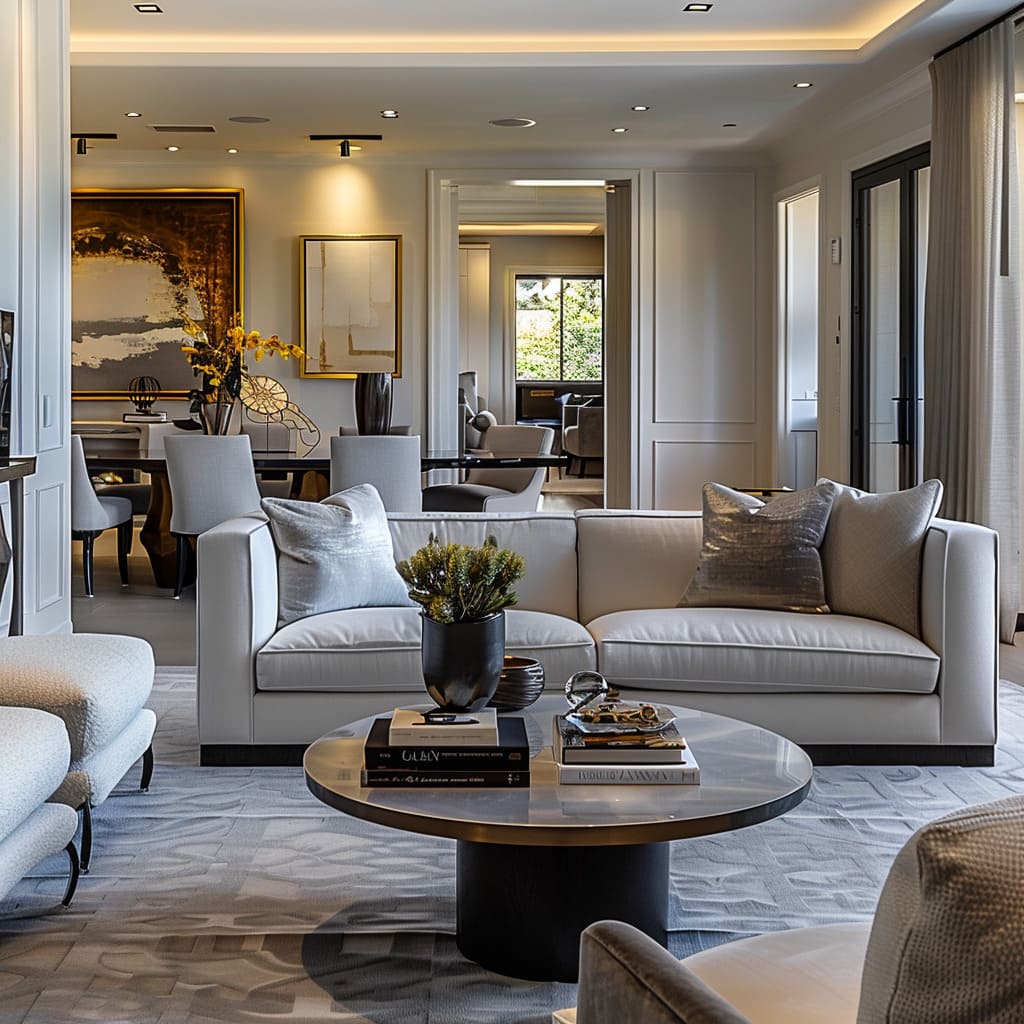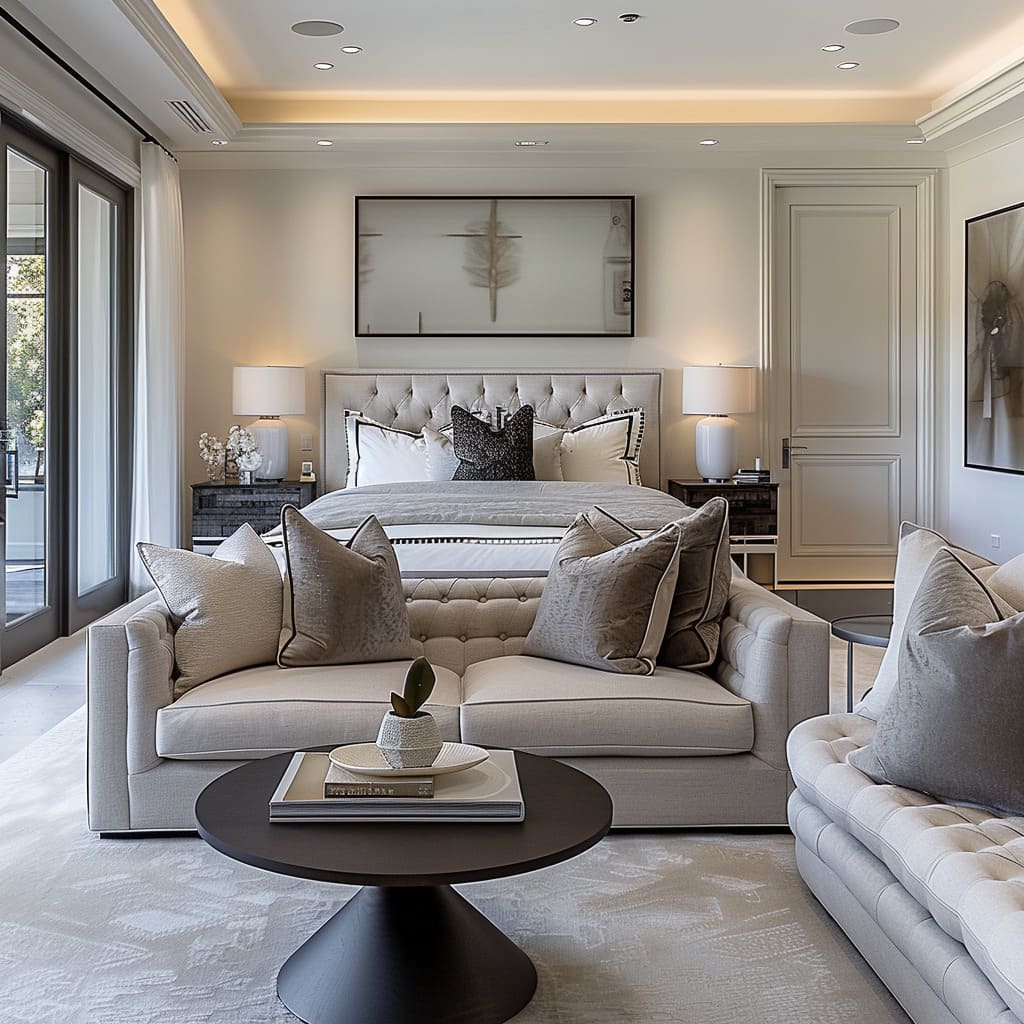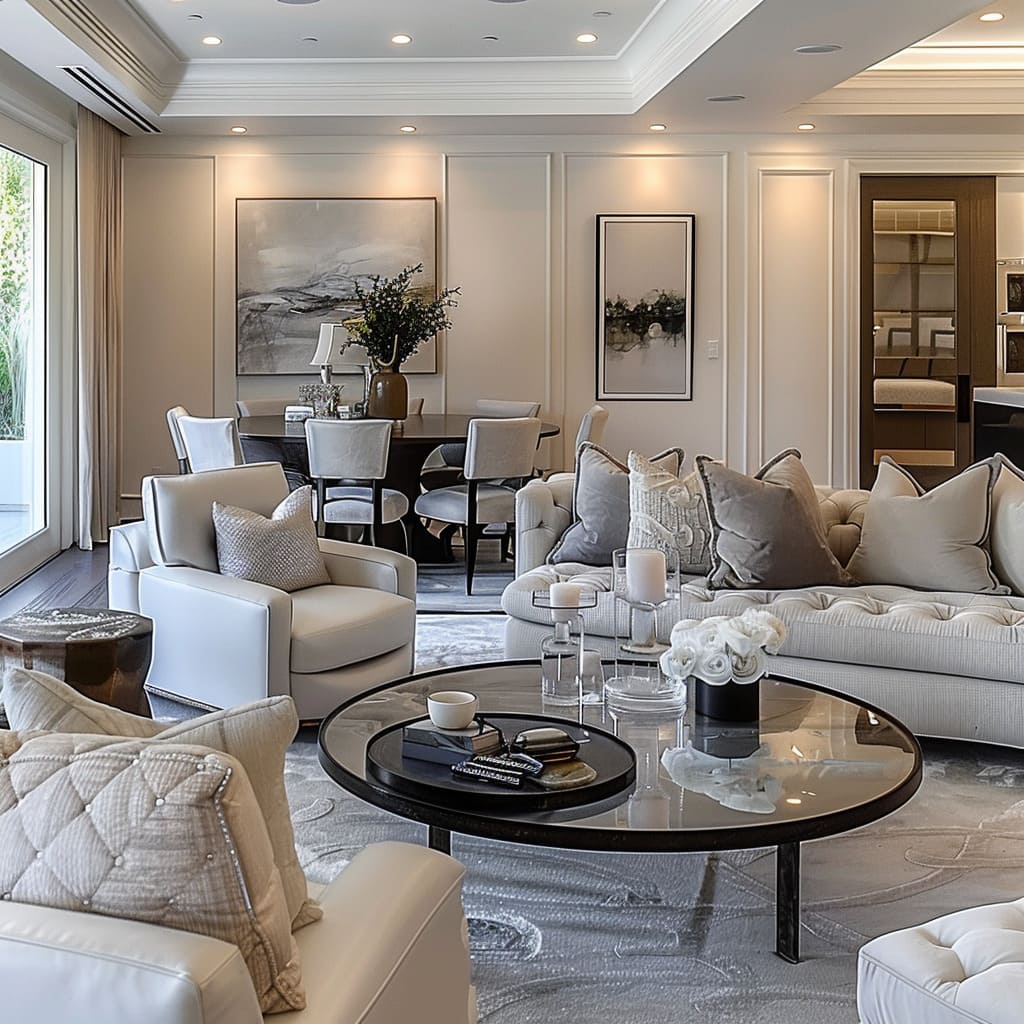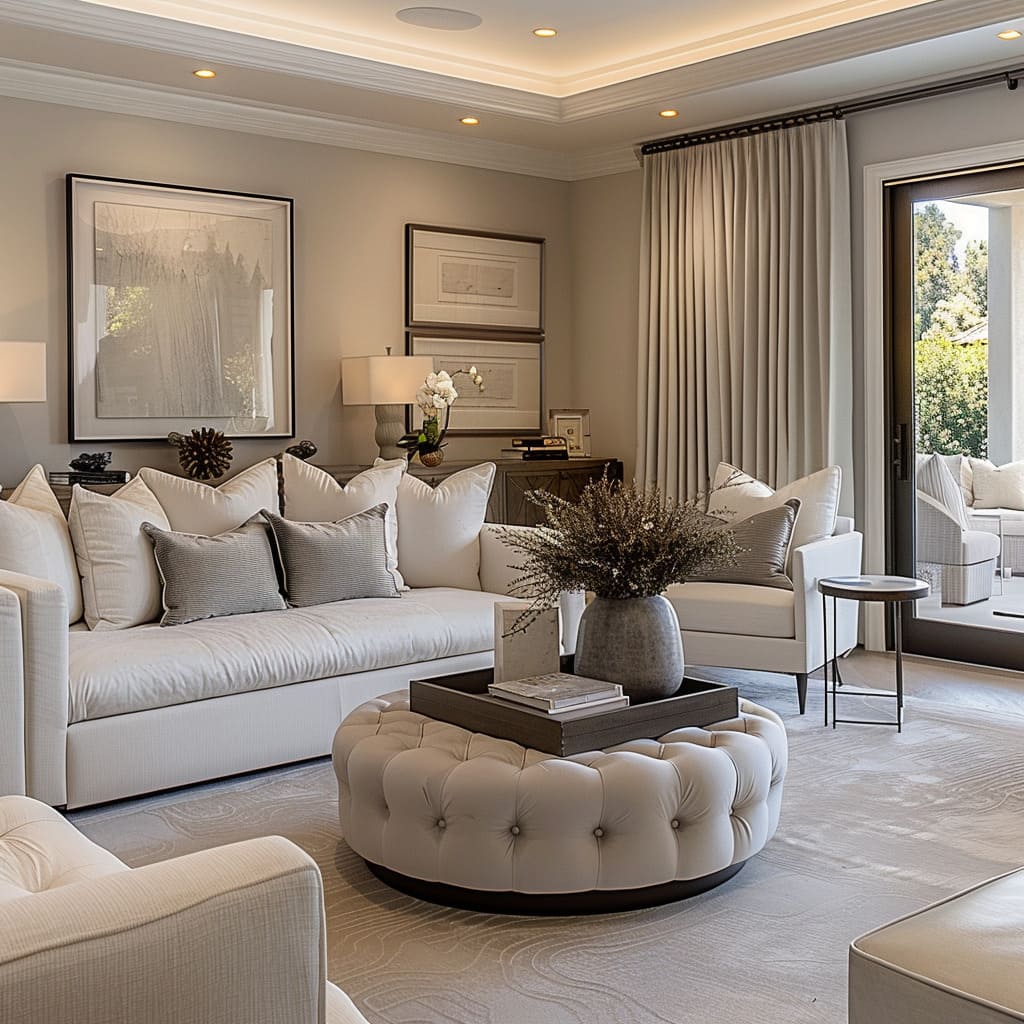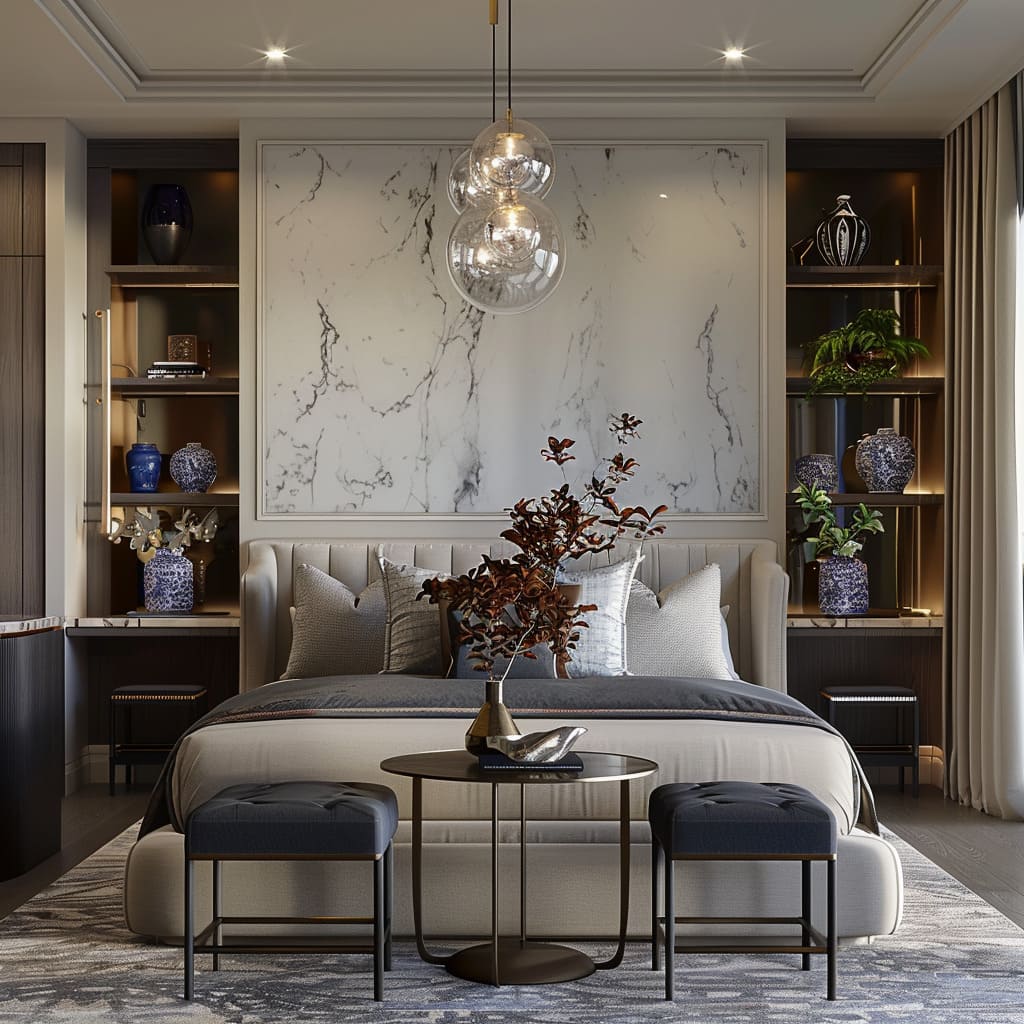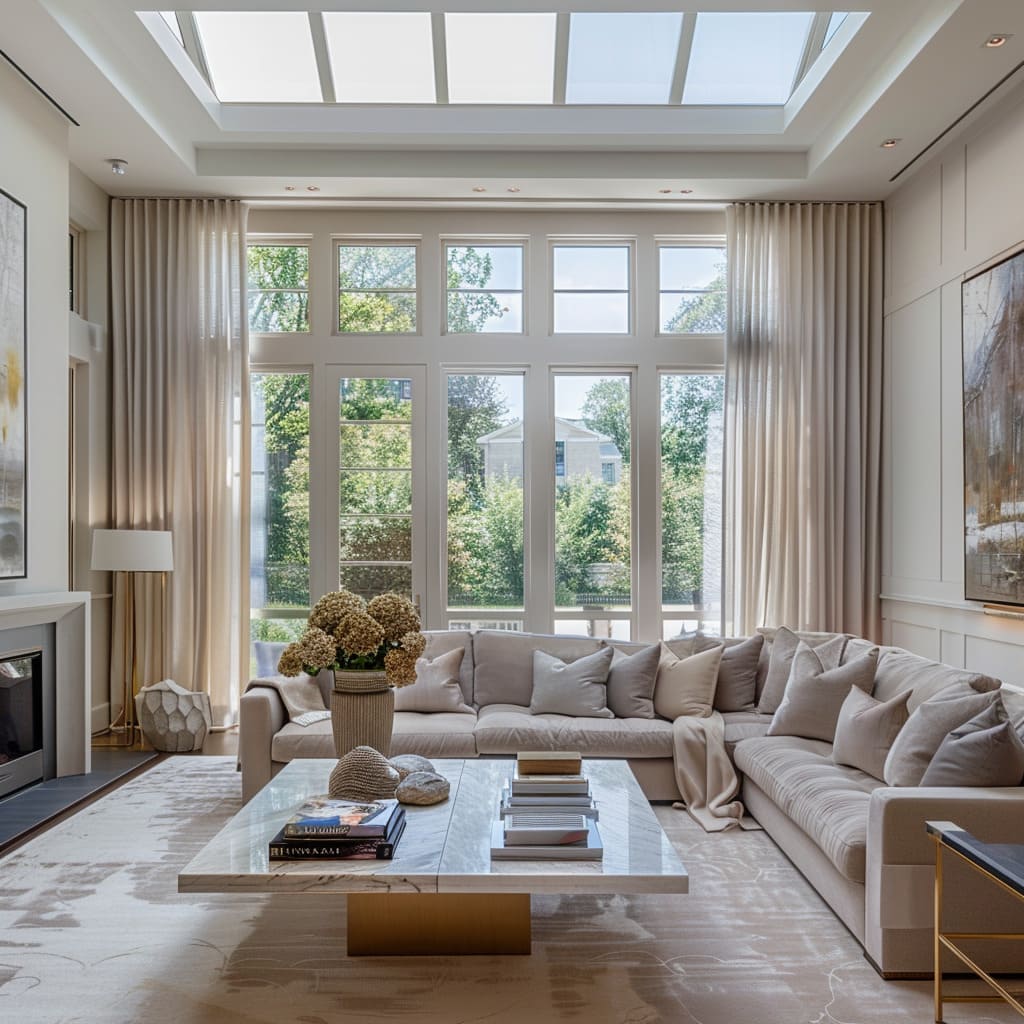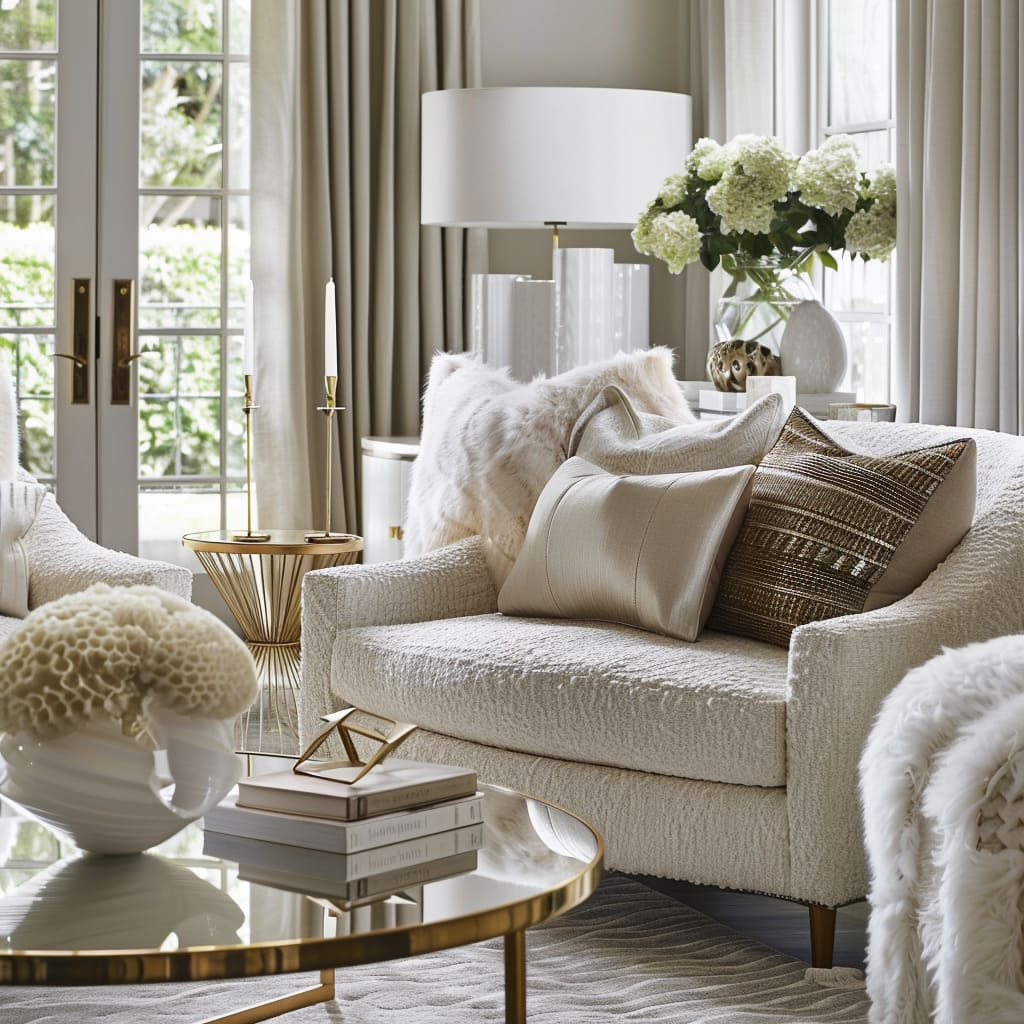Luxurious living is more than just a display of wealth; it’s a thoughtful expression of personal taste and a refined sense of style. This article delves into the intricate details that make up opulent interiors, offering insights into how space, color, lighting, and furniture come together to create environments that are both comfortable and visually stunning.
Whether you’re looking to redesign your home or simply appreciate the finer things in life, this guide will provide you with a comprehensive understanding of luxury in interior design.
The Foundation of Luxury Design
Layout and Space Utilization
In luxury design, space is treated as a canvas on which every element is carefully positioned to create a harmonious flow. The layout is not just about filling a room with high-end furniture; it’s about creating a sense of balance and proportion that guides the eye naturally from one area to another.
Open layouts are often preferred in luxury spaces, as they allow for fluid transitions between different functional zones while maintaining a cohesive aesthetic.
For example, in the living room, the seating arrangement is typically centered around a key piece, like a grand coffee table, with sofas and chairs positioned to encourage conversation and interaction. Similarly, in the bedroom, the bed is the focal point, with additional seating and tables arranged to complement the overall design without crowding the space.
Color Palette and Textures
The color palette in luxurious interiors is often understated yet deeply considered, focusing on neutral tones that create a calming backdrop. Shades of grey, beige, and cream dominate, providing a versatile foundation that allows other elements to shine.
These colors are chosen not only for their timeless appeal but also for their ability to enhance the textures and materials used in the space. Textures play a crucial role in luxury design, adding layers of depth and interest.
Whether it’s the softness of a plush rug, the smoothness of a marble surface, or the subtle pattern of a fabric, each texture is carefully selected to contribute to the room’s overall feel. The interplay of different materials creates a tactile experience that goes beyond visual appeal, inviting touch and interaction.
Furnishing Luxurious Spaces
Furniture Selection and Arrangement
Furniture in luxurious interiors is selected with an eye for both comfort and style. Pieces are often custom-made or sourced from high-end designers, ensuring that each item is unique and of the highest quality. The arrangement of furniture is equally important, as it must enhance the room’s flow while creating intimate spaces for relaxation and socialization.
Symmetry is a common theme in luxury design, as it brings a sense of order and balance to the space. For instance, matching sofas facing each other across a coffee table create a symmetrical arrangement that feels both welcoming and organized. In the bedroom, nightstands on either side of the bed mirror each other, reinforcing the sense of balance.
Statement Pieces and Functionality
Statement pieces are essential in luxury interiors, serving as focal points that draw the eye and define the room’s character. These might include a grand chandelier, an oversized piece of art, or a uniquely designed piece of furniture. However, in luxury design, functionality is never sacrificed for aesthetics.
Each piece is chosen not only for its visual impact but also for its practicality. A statement coffee table in the living room, for example, is not just a showpiece; it’s also a functional surface for drinks, books, and decor. Similarly, a beautifully upholstered headboard in the bedroom adds both comfort and a touch of drama to the space, serving as a backdrop for the bed.
Lighting and Ambiance
Layered Lighting Strategies
Lighting in luxury interiors is all about creating the right mood and highlighting the room’s features. Layered lighting, which combines different types of lights such as ambient, task, and accent lighting, is key to achieving this. Ambient lighting provides overall illumination, ensuring the room is well-lit and inviting.
Task lighting, such as bedside lamps or reading lights, is more focused, providing light where it’s needed for specific activities. Accent lighting, like wall sconces or spotlights, is used to highlight artwork, architectural features, or other design elements, adding depth and interest to the space.
The combination of these different types of lighting creates a dynamic and flexible lighting scheme that can be adjusted to suit different moods and occasions.
Natural Light and Architectural Elements
Natural light is a prized element in luxury design, as it enhances the room’s sense of space and brings out the true colors of materials and furnishings. Large windows, glass doors, and skylights are often used to maximize natural light, creating a bright and airy environment. The use of glass doors, for example, not only allows light to flow freely into the room but also offers stunning views of the outdoors, extending the sense of space beyond the room’s walls.
Architectural elements, such as coffered ceilings or recessed lighting, further enhance the room’s ambiance, adding a touch of sophistication and highlighting the craftsmanship that goes into creating a luxurious space.
Decorative Elements and Art
Incorporating Art into Luxurious Interiors
Art plays a crucial role in luxury interiors, serving as both a decorative element and a form of personal expression. The selection of artwork is a deeply personal choice, with pieces chosen not just for their aesthetic appeal but also for the emotion and meaning they convey. In a luxurious living room, for example, a large triptych or an abstract painting can serve as a focal point, drawing attention and setting the tone for the rest of the room. The placement of art is also important, with pieces often displayed in prominent locations, such as above a fireplace or on a feature wall, where they can be appreciated from multiple angles.
Accessories and Personal Touches
Accessories are the finishing touches that bring a room to life, adding personality and a sense of completeness. In luxury interiors, accessories are chosen with care, ensuring they complement the overall design while adding layers of interest. These might include decorative vases, sculptures, or a carefully curated collection of books.
The key is to strike a balance between minimalism and richness, avoiding clutter while still adding enough detail to make the space feel lived-in and personal. For example, in the bedroom, a few well-chosen items on the bedside table, such as a stylish lamp, a decorative tray, or a fresh bouquet of flowers, can make a big impact.
Textiles and Comfort
Luxurious Bedding and Upholstery
Textiles are one of the most important elements in creating a luxurious interior, as they directly contribute to the comfort and warmth of the space. In the bedroom, high-quality bedding is essential, with layers of soft linens, plush duvets, and an abundance of pillows in varying textures. Upholstery, too, plays a key role, with sofas, chairs, and headboards covered in fabrics that are both beautiful to look at and comfortable to touch. The use of textiles extends beyond just the obvious pieces, with rugs, curtains, and throws all contributing to the room’s overall feel.
The combination of these elements creates a space that is not only visually appealing but also incredibly inviting.
Rugs and Draperies
Rugs and draperies are essential in luxury interiors, providing both practical and aesthetic benefits. A well-chosen rug can anchor a room, defining different areas within an open-plan space and adding warmth underfoot. Draperies, on the other hand, offer privacy and light control while also adding a layer of texture and softness to the room. In a luxurious living room, for example, a large area rug in a muted tone can complement the color palette while also enhancing the room’s acoustics.
Draperies made from rich fabrics, such as silk or velvet, can frame the windows, adding a sense of drama and elegance.
Outdoor Connections and Extensions
Balcony and Outdoor Living
In luxury design, the connection between indoor and outdoor spaces is often emphasized, creating a seamless transition that extends the living area and takes advantage of natural light and views. Balconies, terraces, and outdoor living areas are treated as extensions of the interior, with furniture and decor that mirror the style and comfort of the indoor spaces. For example, a balcony off the bedroom might be furnished with comfortable seating and a small table, creating a private retreat where one can relax and enjoy the view.
The use of outdoor rugs, cushions, and even art can further blur the line between indoor and outdoor living, creating a cohesive and luxurious environment.
Conclusion
Luxurious living is defined by attention to detail, from the careful selection of furniture and materials to the thoughtful arrangement of space and the use of light and texture. It’s about creating environments that are not only beautiful but also comfortable and functional, reflecting a deep understanding of how design can enhance everyday life. Whether you’re looking to create a luxurious living room, a serene bedroom, or a sophisticated outdoor space, the principles outlined in this article provide a roadmap for achieving a truly opulent interior.
